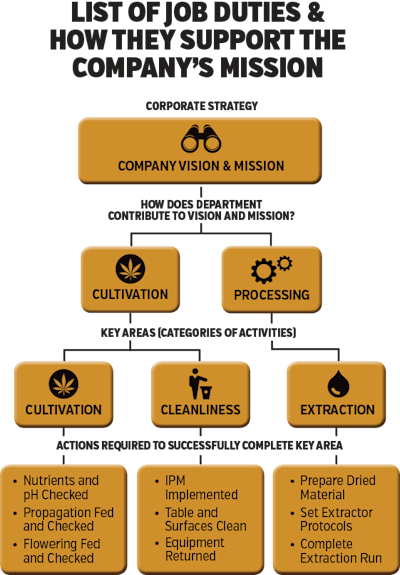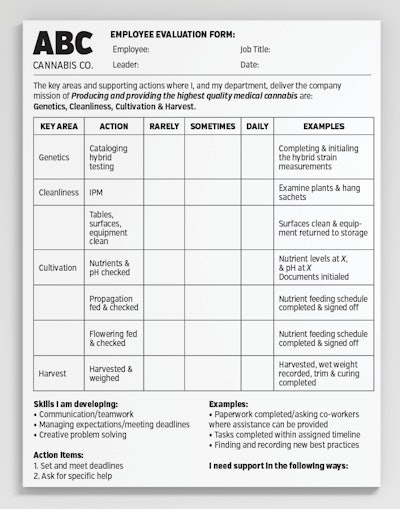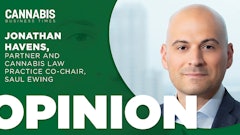
The legal cannabis industry’s workforce is growing by leaps and bounds. New Frontier Data predicts the creation of more than 280,000 cannabis jobs by 2020. With this growth in jobs, and keeping in mind most of them will be filled by millennials, are you prepared to attract and retain top talent?
Consider this: 42 percent of millennials want feedback every week (twice the percentage of every other generation), according to a report by HR/payroll solutions provider Ultimate Software, but only 19 percent say they receive it (per a Gallup report). In addition, just 29 percent of millennials are engaged at work, “meaning they are emotionally and behaviorally connected to their job and company,” reported Gallup. Sixteen percent are actively disengaged, which means that these employees “are more or less out to do damage to their company.” The majority (55 percent) of millennials are not engaged at work-the highest of any generation.
If those statistics are not daunting enough, 34 percent of millennials plan to leave their current employer within two years, the “2017 Deloitte Millennial Survey” found. And do not forget that employee turnover can increase labor costs by 75 to 100 percent for each employee that needs to be replaced, according to a report by HR solutions provider G&A Partners.
These startling statistics underscore the fact that many younger employees are seeking instantaneous feedback-in the same way they receive Facebook and Instagram “likes.” But they are currently part of management systems that do not place an emphasis on immediate feedback-instead conducting traditional annual or, at best, quarterly reviews.
Traditional reviews and bonus programs are designed at a corporate level, and often focus on employee behaviors and activities that may not be aligned with the mission and vision of a specific branch or operation. As an example, what if, as a company, you provided bonuses based on the total weight of a harvest. This metric would ignore total throughput (how many harvests per year, among other factors), and could even encourage employees to utilize higher levels of nutrients and potentially pesticides. Suddenly, costs have increased, while quality and safety have declined.
All this leaves the modern cannabis company with two big questions:
- How will you engage and develop your employees?
- How will you connect long-term company success with day-to-day tasks and activities?
A weekly or monthly “Positive Action Plan” (PAP) helps to create a culture of high-performing and motivated employees. The PAP ties together the company’s mission and vision, all the functional areas that make the company successful, and the actions and tasks that make up those areas. Each supervisor should take five minutes each week or month to complete a PAP for each employee, and another five minutes reviewing the results with the employee. The idea is to create a quick check-in that focuses on strengths and real-time feedback.
How to Use the PAP
Begin with the areas where each department supports the company’s mission. Ask yourself, “On what must we execute to be successful?” Support this by listing the activities that are completed on a regular basis as part of that area. (See the example below.) These areas can be separated however tasks are generally assigned in your company. Make sure you have accounted for all activities. Providing specific examples helps employees understand exactly what is expected.
In a cultivation environment, remember to include key areas that support your department such as cleanliness, record keeping and compliance, and routine maintenance. In a dispensary, include customer service, and support it with actions such as: greeting customers, making relevant recommendations of products and strains, and offering companion products and accessories. Corporate functions such as marketing and outreach can also utilize PAPs. Think trade shows, advertising, patient support groups, guest speaking at educational events and social media, for example.
Using a PAP this way draws a direct connection between the activities in a job function and the mission and vision of the company. It provides purpose. It allows each employee to see how he or she directly impacts the success of the company and the good that the company does in the world.

Specify your company’s mission and vision at the top of an organizational chart (included in the “Positive Action Plan”) that maps out how each employee’s role directly relates to that mission and vision. This helps to give each employee a sense of purpose in performing otherwise potentially mundane job duties, as she can see the company’s impact on its customers and community, and her involvement in that.
A completed employee-evaluation form indicates, in a snapshot, if the employee engaged in these activities rarely, sometimes or daily. The intent is to promote positive action where the feedback is being received well, and to prevent employees from reacting defensively.
I have seen some cultivation departments map these activities weekly on a whiteboard and assign certain tasks to each employee for the week. These weekly meetings are a great place to perform a quick review of the PAPs.
In more traditional employee evaluations, there is often a focus on “areas for improvement.” Some drawbacks exist to this strategy in that it implies there is something wrong, it can focus on the employee’s weaknesses (not strengths), and it can be ambiguous in how to accomplish improvement.
Instead of saying, “Improve upon being a team player,” a more positive approach shifts the focus to tangible examples. Say, “A skill you are developing is teamwork. Last week when you asked your coworkers how you could assist them in completing harvest is a great example of how you excel in that area. Keep doing that and more often!”

3 Steps to a Focused PAP
Use these steps to build this component of desired behaviors into a Positive Action Plan:
- List one to three skills (strengths) that the employee possesses and one to three skills that the employee is developing (area of improvement).
- Provide examples of how the employee uses those skills in his daily or weekly routines. The more specific the examples, the easier it is to understand, and the more likely you are to see results.
- When you list current skills with areas to be developed, provide tangible examples with your feedback. Again, frame the conversation this way: “That thing (example) you did on Wednesday was great. Keep doing that!”
Some common skills may include communication, teamwork, leadership, creative problem solving, meeting deadlines, consistency and timeliness.
The successful implementation of a PAP program serves to connect strategic and tactical activities in any company. The use of PAPs results in engaged, motivated and dedicated employees, reduced turnover and, in-turn, greater company success.
























